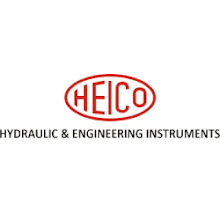In mechanical testing, there are two distinct classes of ductile testing machines; Screw driven, otherwise called electromechanical, and hydraulic.
Electromechanical (screw-driven) tractable analyzers have as of late become well known over the more seasoned hydraulic frameworks. An electromechanical machine is frequently calmer, occupies less room, is more straightforward to move around, runs on less overall power, and requires less support when contrasted with a hydraulic machine utilizing a Hydraulic Power Unit (HPU).
The electromechanical or screw-driven test outlines normally utilize an electric engine and two rise screws to run the crosshead all over. The geniuses of electromechanical test machines are that they offer a huge scope of test speeds by changing the speed of the engine. They likewise accommodate longer crosshead travel distances (stroke) of up to 100 inches or more. Screw Driven or UTM machine is known for speed and position precision.
Besides, on a screw-driven machine, because of the heap cell plan under the crosshead, it is simpler to adjust an assortment of tooling and extras (counting grasps, custom installations, extra burden cells, ecological chambers) Contrasted with a hydraulic machine that is harder to apparatus because of the double test space nature of their design. Strain testing is acted in the top window (between the top crosshead and the center crosshead) and pressure testing is in the base window (between the center crosshead and the table).
The cons of electromechanical are they are more costly per force limit contrasted with hydraulic machines (cost per limit). For instance, a 60,000 Lbf (300kN) screw-driven machine would be a lot more costly contrasted with an equivalent power limit hydraulic machine. They are likewise not as rough and are more delicate to the trash and filthy conditions than a hydraulic machine.
Hydraulic Machines
Hydraulic testing machines' load outlines are very strong and rough. With the present current servo-hydraulic innovation, they have become exceptionally exact in burden and position control. These testing machines consolidate a solitary or double course cylinder to move the table and joined the top crosshead to apply the power.
Also Read:- Types and Uses of a Hydraulic Machine
One disadvantage of a hydraulic ductile analyzer is the test travel is restricted by the cylinder stroke, which is ordinarily 6-9 inches. Besides, hydraulic machines are substantially more practical when the need emerges for creating high powers, regularly 60,000 (Lbf) and that's only the tip of the iceberg. Ordinarily, hydraulics are the main choice while testing above 120K (600 kN).
The Machinery mechanizes both hydraulic and screw-driven test machines, offering control with servo engines or servo valves controlling the machine's test speed/rate. Both may have the capacity to control testing speed as estimated by load rate, position rate, and strain rate.






0 Comments